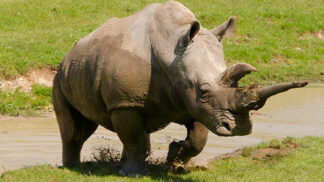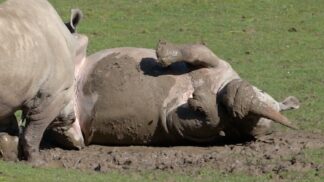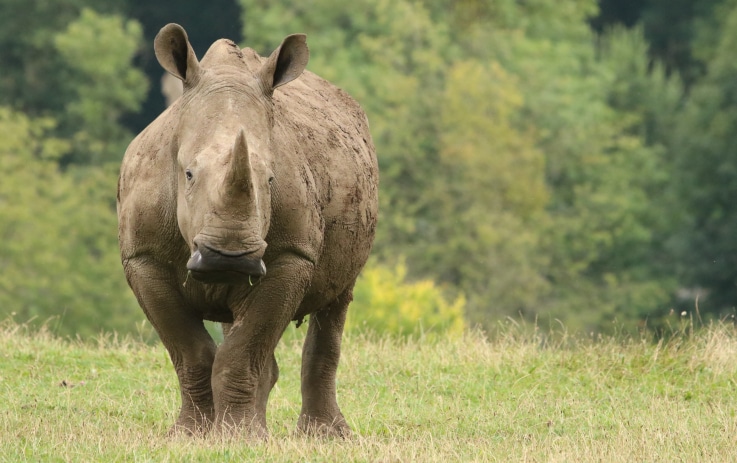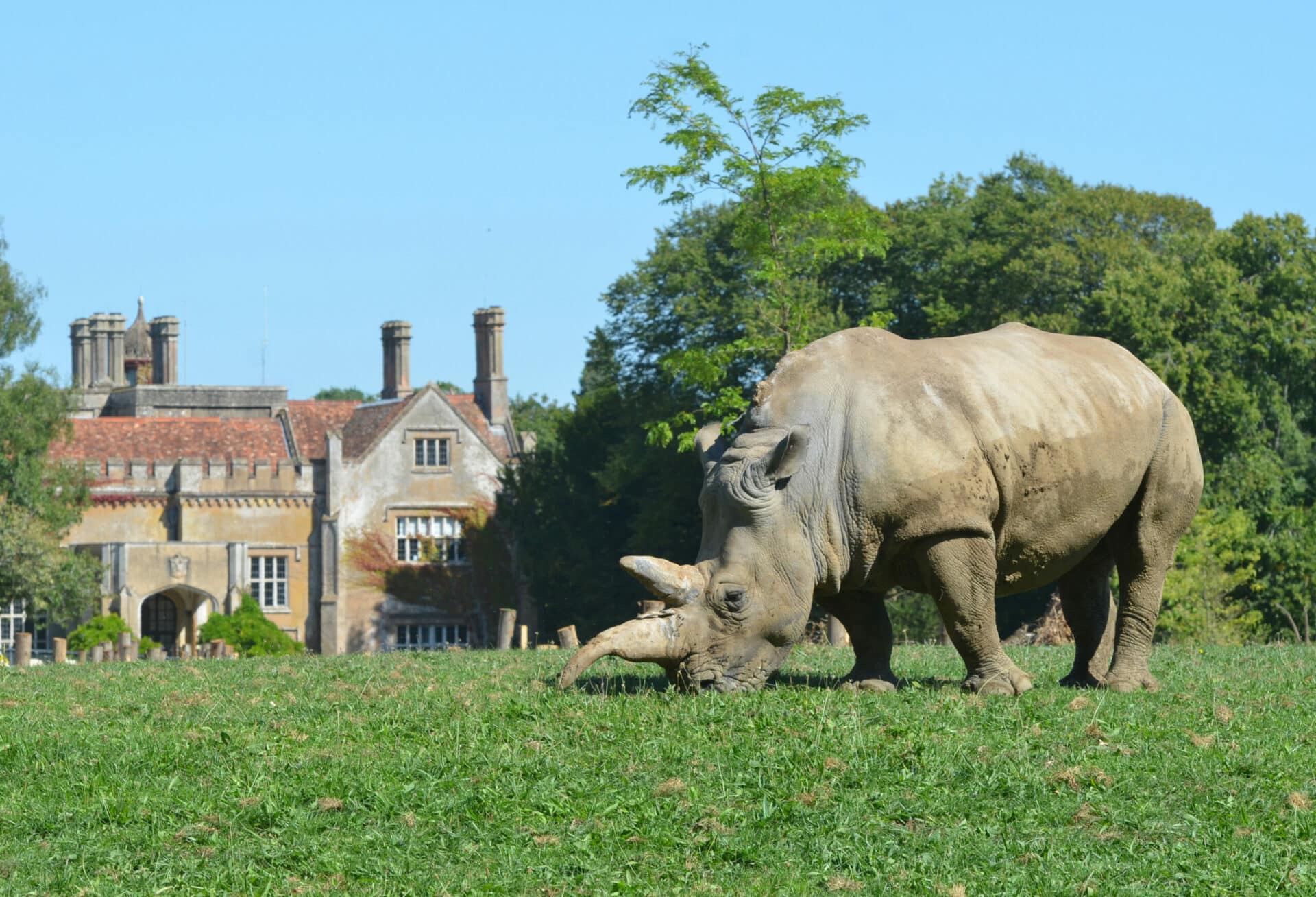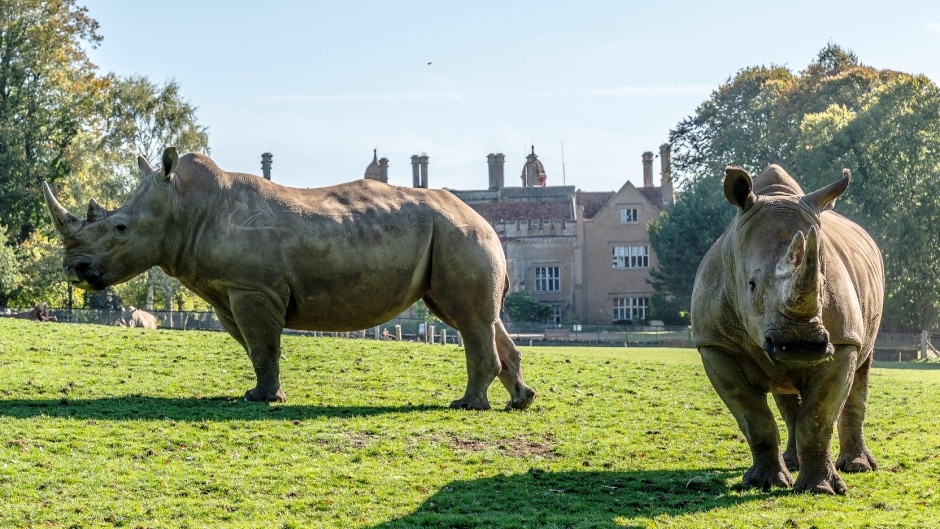White rhinoceros
Common name: White rhinoceros
Scientific name: Ceratotherium simum
The white rhino is one of the world’s largest land animals with a body size smaller than elephants but of similar stature to the greater one-horned rhino. The species has two horns, with the front usually longer than the back. They are primarily used for defence and asserting dominance but can have much more subtle applications as a means of digging, exploring objects in the environment or for females guiding their young calves. Made of keratin, the same material as our hair and toenails, the horns continually grow and are shaped by rubbing.
The distinctive lump at the back of the white rhino’s short neck is known as the nuchal or sacral hump. It is a mass of strong muscles and ligaments supporting the animal’s large head which tends to be held low to the ground. The white rhino’s wide mouth explains why this species is sometimes called the ‘square-lipped’ rhino and is adapted for grazing on grass.
The white rhino is one of five living species of rhinoceros along with the black rhino Diceros bicornis (also found in Africa), the greater one-horned rhino Rhinoceros unicornis, Javan rhino Rhinoceros sondaicus and the Sumatran rhino Dicerorhinus sumatrensis (all found in Asia). Collectively, their nearest relations are tapirs and equids (horses, asses and zebras), which also have odd numbers of toes and similar digestive systems.
The white rhino’s scientific name Ceratatherium simum is derived from a latinised form of Greek using the terms keras (horn), thērion (beast) and simos (flat nosed). Two sub-species of white rhino are recognised. The Southern white rhino Ceratatherium simum simum originally occurred in Africa south of the Zambezi River, while the Northern white rhino Ceratatherium simum cottoni was found in East and central Africa south of the Sahara, although see the conservation section below for their current status.
Fast Facts
-
Status
Near Threatened
-
Size
Shoulder (h): 1.5 – 1.8m
Body (l): 3.6 - 4.2m -
Weight
Males 2,500 kg, females 1,800 kg
-
Gestation
16 months
-
Number of Young
1
-
Lifespan
up to 40 years
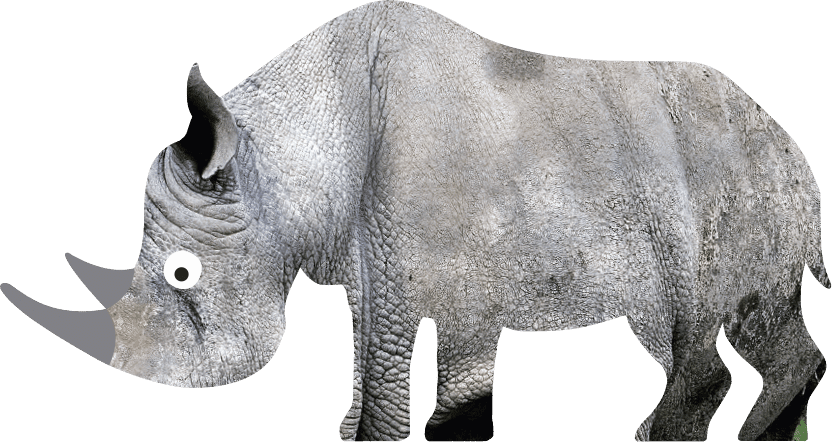
In the wild
White rhinos are the largest purely grazing animal in the world (elephants are mixed feeders, eating grass and woody plants). They prefer short grass and select areas of higher nutritional quality. However, due to their digestive system and large body size, they can manage on highly fibrous and poor-quality grasses when needed. Like similar species, white rhinos rely on microorganisms in their gut to help break down and digest their food. White rhinos usually drink twice a day from regularly used water sources. However, they are known to go 4 or 5 days without drinking when water is scarce, sometimes travelling some distance to find it.
White rhinos inhabit dry grasslands and shrublands. They spend most their time alternating between feeding or resting, being less active during the hottest part of the day often in the shade of a tree or thicket. Trees and dense shrubs also serve as shelter during colder, windy periods. Like other rhinos, they wallow in mud to keep cool, and to provide protection against the sun and parasites. Use of mud wallows is often followed by bouts of rubbing on suitable trees or rocks.
White rhino habitat is often characterised by patches of closely grazed lawns amongst longer vegetation. In this way, white rhinos diversify vegetation structure and help other herbivores to feed by keeping the grass short.
Dominant male white rhinos are solitary and territorial but may tolerate the presence of subordinate males. Females and their offspring may congregate in herds of up to a dozen or so animals. This affords protection but while young rhino calves may be vulnerable to lions Panthera leo and spotted hyaenas Crocuta Crocuta, older animals are generally untroubled by predators.
Both male and female white rhinos advertise their presence using communal dung heaps known as middens. The odour reveals information about age, sex, the territorial status of males and whether females are receptive to breeding. White rhinos use a surprisingly wide range of vocal communication including contact calls, grunts and snorts, plus higher pitched squeals when distressed, and deep bellows signifying aggression or when threatened.
Male white rhinos may be 10 years old before they are ready to breed, whereas females mature around 6 or 7 years old and then may have a calf every 3 years. Following a 16-month gestation period, calves are born and able to stand within an hour, immediately trying to suckle. Calves normally move in front of their mothers, begin grazing after a few weeks and weaning occurs around 1 year of age. Calves remain with their mothers for around 3 years, eventually separating when a new calf is born.
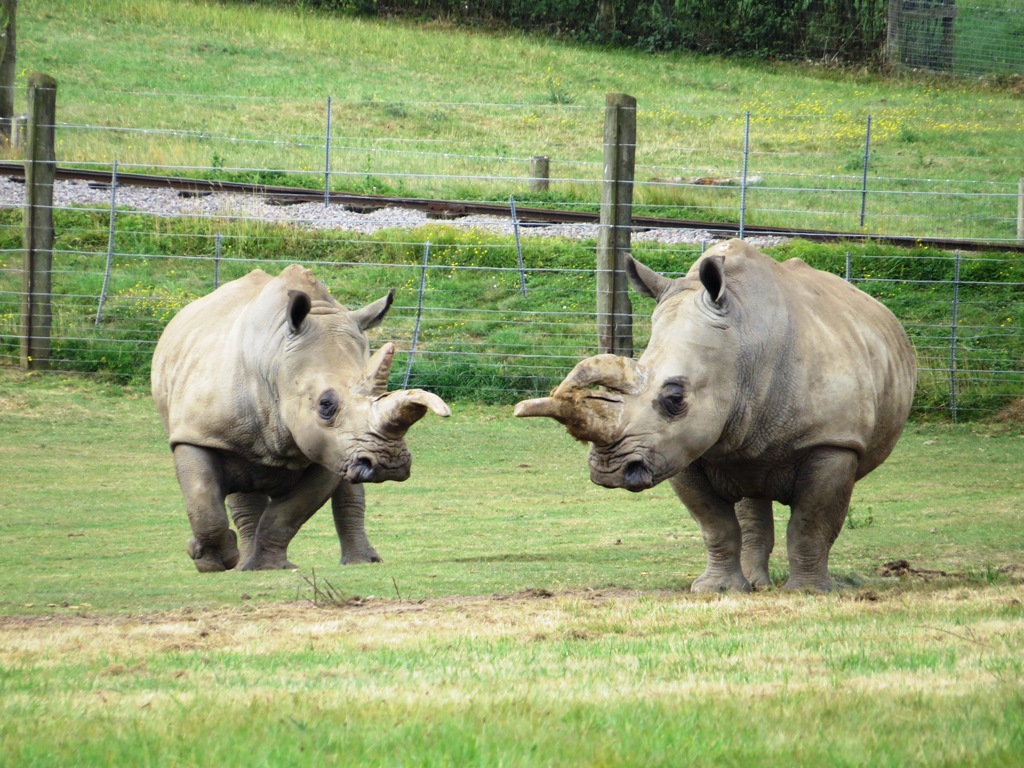
The Northern white rhino is thought to be extinct across its entire former range. Only two individuals of this sub-species remain, both female, now living at the Ol Pejeta Conservancy in Kenya.
The Southern white rhino was almost hunted to extinction by the end of the 19th Century with only one small population of approximately 20 – 50 animals remaining in KwaZulu-Natal, South Africa. However, protection and translocation (capturing and transporting) of animals led to their recovery in South Africa and being reintroduced to Botswana, Eswatini, Namibia, and Zimbabwe. Populations have also been established in Kenya, Uganda and Zambia.
Recent estimates suggest that there may now be around 18,000 individual white rhinos. However, the species remains at risk from illegal hunting (poaching) for their horns. These are used in traditional medicine and ornaments, primarily in South East Asia. Increasing interest from criminal syndicates involved in the illegal trade in rhino horn poses a significant threat. Intensive monitoring and protection of white rhinos from poaching is critical to their survival while animals may be translocated between areas to manage and safeguard their populations.
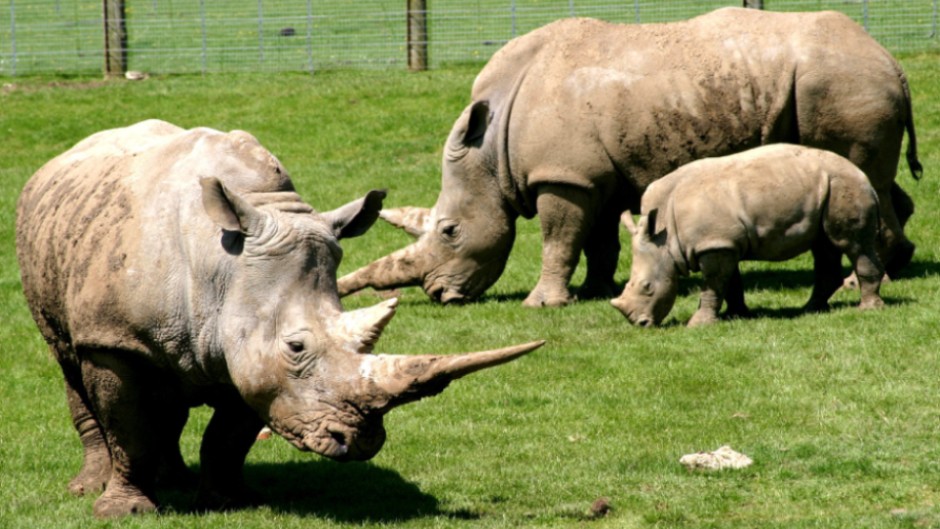
There have been white rhino at Marwell since 1986 and we currently have four animals. Our oldest rhino, Kiri, was born in 1986, arriving at Marwell in 1988 from Whipsnade Zoo. Our male white rhino Jabari arrived from Dublin Zoo in 2015. He was born in 2013 so will soon be mature and hopefully ready to breed. Pembe was also born in 2013, and she arrived here from Colchester Zoo in 2016. Born in 2017, Zahra is Marwell’s youngest rhino, and she is also the newest rhino to join the group, arriving in 2021 from Safari Zoo Cumbria.
Our rhinos have access to a specially designed house, adjacent landscaped hardstanding area with water hole and a large paddock shared with scimitar-horned oryx and Grevy’s zebra. The environment has all the resources rhinos naturally use, including plenty of year-round grazing, sandy areas for resting and rolling, mud wallow, and shade trees along with rocks and tree trunks for rubbing against. They are subject to 24-hour security surveillance.
